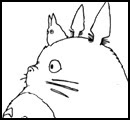About that initial warning: Early in the proceedings, Malle happens upon a recently perished cow on the side of the road. The camera gazes at length as wild dogs, and then vultures, rip the flesh from its eye sockets. Malle is hypnotized by the carnage, but it’s an everyday occurrence to the Indians walking the street. They glance over only to stare down the alien presence of the film crew. Although Malle gradually becomes inoculated to the most common miseries, he acknowledges that the culture will always remain a mystery, a “phantom,” to non-Indians.
Malle often lingers during the rest of “Phantom India.” On dancers, water-carriers, a yoga master, a funeral. On whatever catches his eye. A repeated action can take on a life—and an arc—of its own. Malle has a preternatural way of syncing with the viewer. What I mean is, long scenes tend to end at the exact moment they start becoming uninteresting.
“Phantom India” is a precious commodity. What seemed exotic at the time may not even exist now. Malle’s voiceover occasionally offers Western critiques of a society he admits he doesn’t understand. These can be ignored. What matters is the document.

This is typical narration for the film.

No comments:
Post a Comment